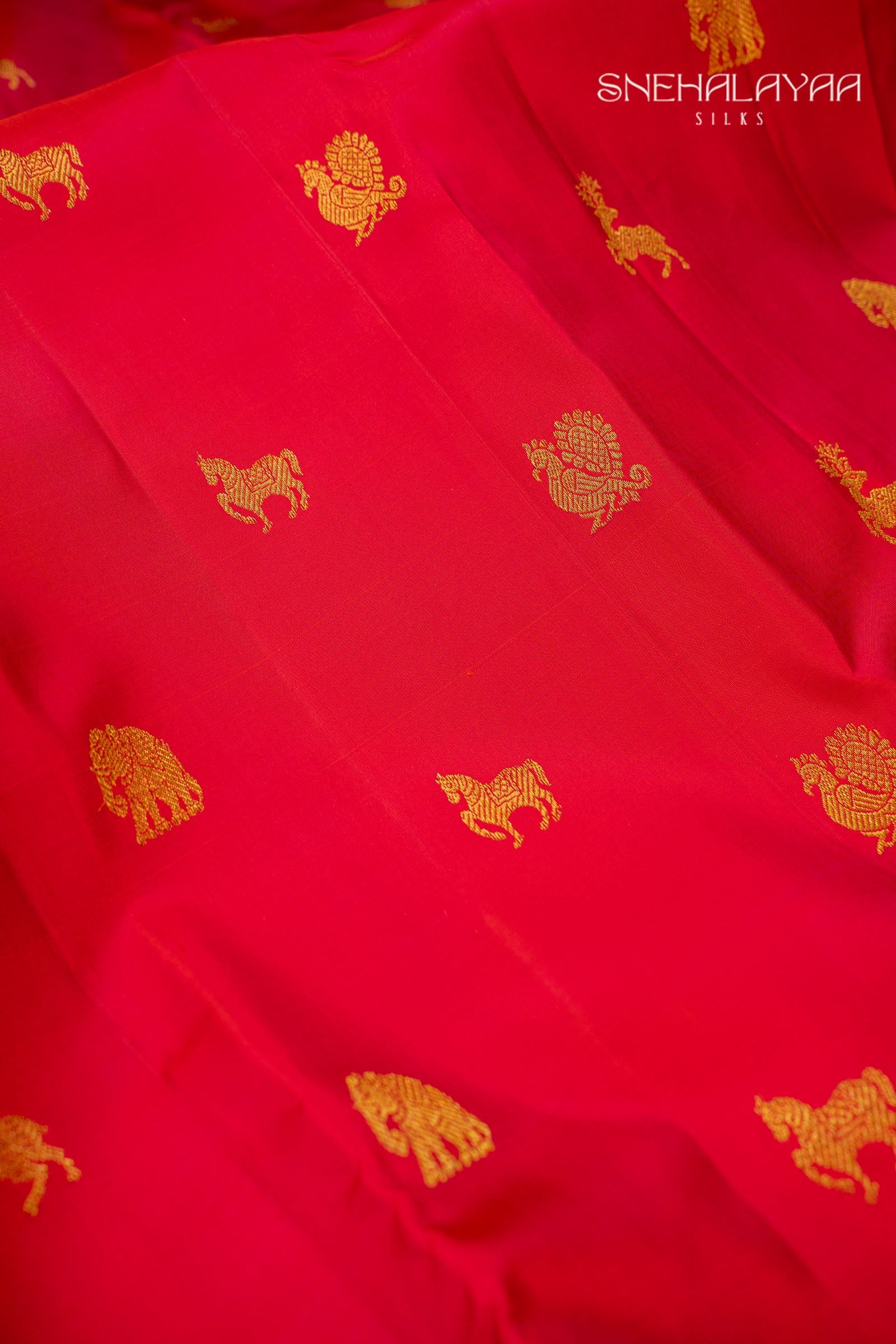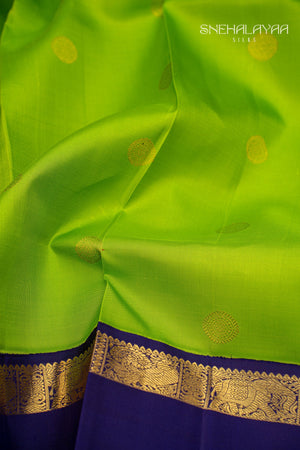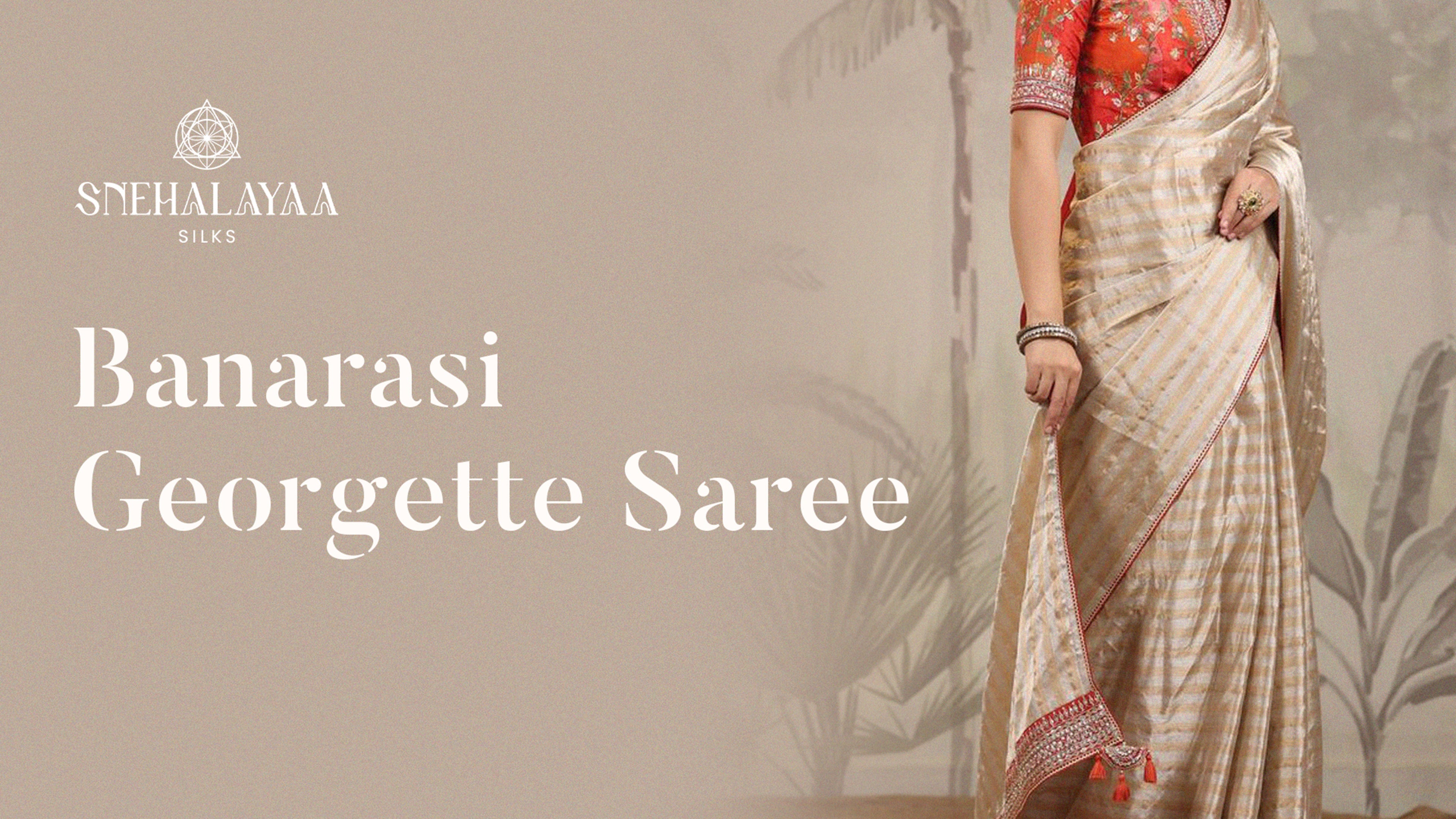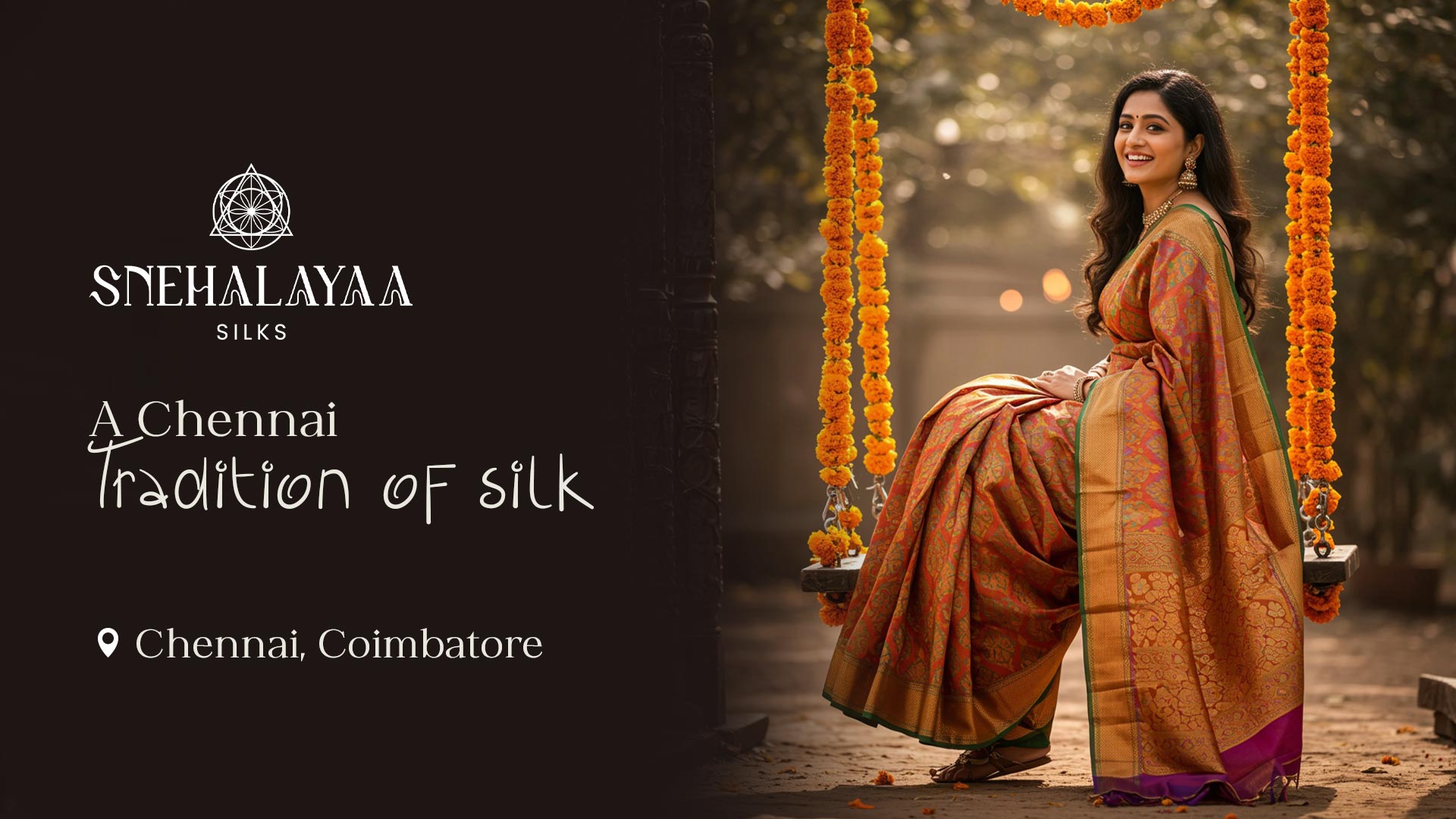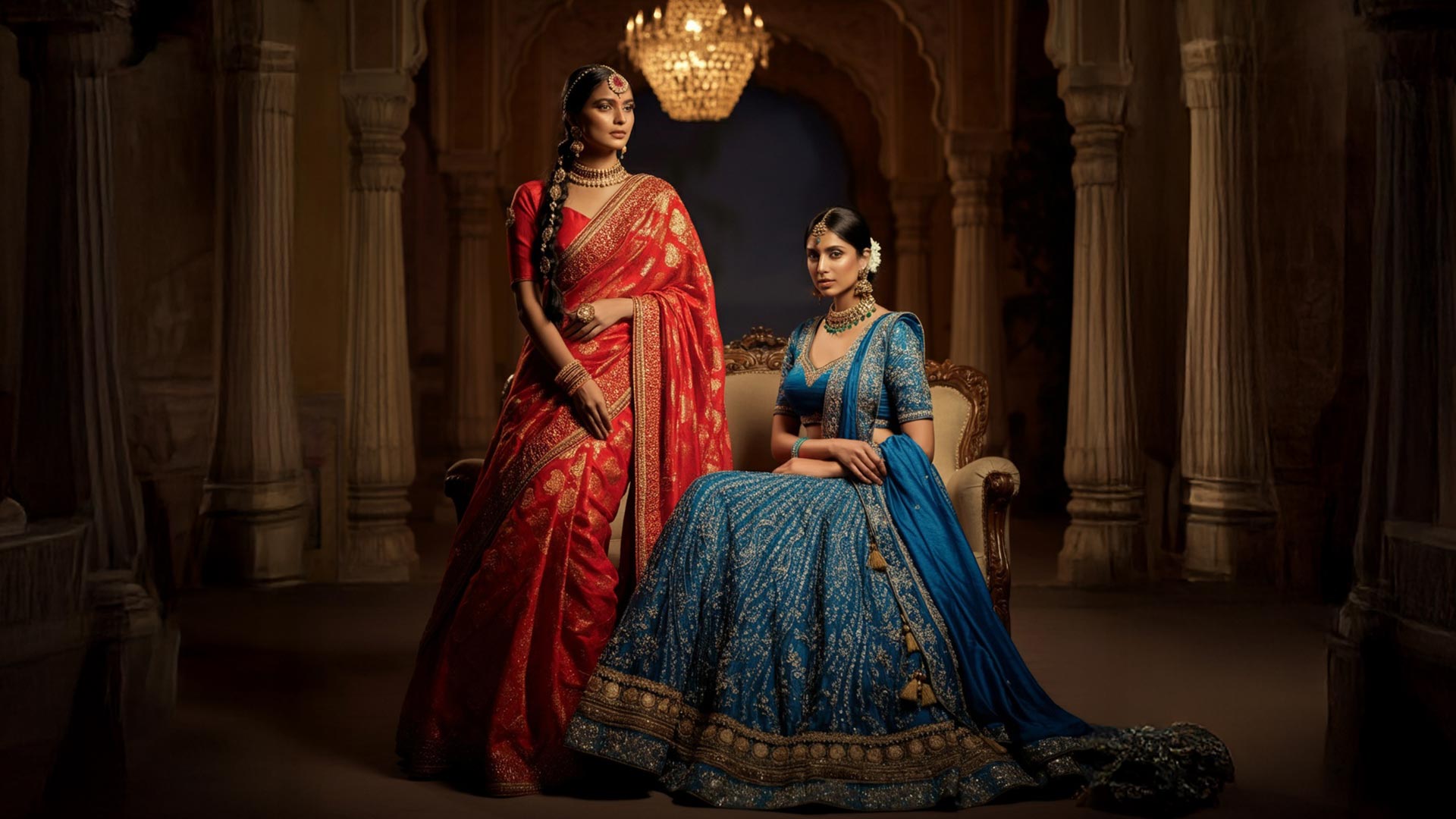Every pure Kanchipuram saree begins its journey not in a factory, but in the hands of master weavers, in the heart of Tamil Nadu. It's more than a piece of clothing — it’s a canvas of culture, craftsmanship, and timeless beauty. From loom to luxury, the lifecycle of a pure Kanchipuram silk saree is an emotional and artistic process, preserving a centuries-old tradition.
The Birthplace of the Pure Kanchipuram Saree
The story of the pure Kanchipuram handloom silk saree begins in Kanchipuram — often called the "Silk City of India." For over 400 years, this temple town has nurtured generations of weavers who treat their craft as a legacy, not just a livelihood.
In small weaving homes, the rhythmic clatter of handlooms is a familiar sound. Unlike mass-produced sarees, these are woven by hand, taking anywhere from a week to three weeks to complete one pure Kanchipuram saree.
Selecting the Silk: The First Step in Crafting a Pure Kanchipuram Silk Saree
Every pure Kanchipuram silk saree begins with high-quality mulberry silk yarn, mostly sourced from Karnataka and Tamil Nadu. Known for its softness and strength, this silk gives the saree its signature luster and longevity.
The yarn undergoes multiple steps:
1. Degumming (removing the natural gum)
2. Dyeing in vibrant hues
3. Sun-drying for texture and shine
These threads, once dyed and stretched, become the base of the pure Kanchipuram handloom silk saree.
Zari: The Heart of the Zari Woven Silk Saree

A key feature of every pure Kanchipuram saree is its zari work. Authentic zari woven silk sarees use silver threads dipped in gold, twisted around a silk core. This makes the saree heavier, more luxurious, and unmistakably rich in its appearance.
The zari is used extensively in:
1. Borders (known as korvai)
2. Pallu (the statement end-piece)
3. Motifs across the body
The shimmer of zari is what transforms the saree from elegant to ethereal — especially in a bridal Kanchipuram saree or Kanchipuram sarees for wedding ceremonies.
The Weaving Process: Where the Pure Kanchipuram Saree Comes to Life

Once the silk and zari are ready, the weaving begins. A pure Kanchipuram handloom silk saree is woven on a pit loom, often by two artisans — one managing the shuttle, the other the threads.
The process includes:
1. Arranging warp (vertical) and weft (horizontal) yarns
2. Weaving the body, border, and pallu — often in separate parts and later interlocked using a technique called korvai
This interlocking method ensures that the contrasting parts of the saree (like red borders on a green body) stay firmly attached — an art form in itself.
Motifs like peacocks, elephants, temple towers, and floral vines are commonly used, with inspirations drawn from South Indian temple architecture.
Quality Check and Finishing: The Final Steps Before It Reaches You
Before a pure Kanchipuram saree is ready for sale, it undergoes finishing steps to ensure both look and longevity:
1. Gentle washing to remove excess dye and starch
2. Stretching and steam ironing
3. Border and pallu stiffening (optional)
4. Hand-checking for weaving errors
It is then folded carefully, often wrapped in tissue or cotton cloth to protect the zari and silk during storage and shipping.
From the Weaver to the Wardrobe: A Journey of Value
Despite its rich look, the earnings for weavers are often modest. The sarees are sold through co-ops, retailers, and now increasingly through certified online sellers.
A high-quality pure Kanchipuram silk saree can cost anywhere from ₹10,000 to ₹1.5 lakh, depending on:
1. Amount of real zari used
2. Complexity of weaving
3. Size of the border and pallu
4. Certification (look for the Silk Mark)
Online platforms are also expanding the reach of these sarees globally — especially to NRIs shopping for kanchipuram sarees for wedding purposes.
The Grand Debut: Draping the Pure Kanchipuram Saree with Pride

The real moment of joy comes when the pure Kanchipuram saree is finally worn — often for a wedding, festival, or temple ceremony.
The drape hugs the body with grace, while the zari glows under light. Brides often choose these for their first-look photos, while mothers pass theirs down with emotional pride.
No two sarees feel exactly alike. That’s the charm — each saree is as unique as the woman who wears it.
Preservation: A Saree That Lasts for Generations
 A pure Kanchipuramhandloom silk saree is known not just for its beauty but for its durability. With proper care, these sarees can last 30–40 years — and even be passed down as family heirlooms.
A pure Kanchipuramhandloom silk saree is known not just for its beauty but for its durability. With proper care, these sarees can last 30–40 years — and even be passed down as family heirlooms.
Here’s how to preserve one:
1. Fold it in different ways every few months
2. Store in a cotton bag or tissue paper
3. Keep away from moisture and direct sunlight
4. Use neem leaves or clove sachets to deter insects
In South Indian homes, it’s common to inherit a zari woven silk saree from one's mother or grandmother — making it a priceless emotional artifact.
Why Every Indian Wardrobe Deserves a Pure Kanchipuram Saree
There are sarees, and then there are pure Kanchipuram sarees. They carry more than style — they carry soul. In a world of fast fashion, they represent slow, mindful artistry.
Whether you're buying one as a bride, a collector, or a gift for someone special, you’re not just investing in a garment — you’re becoming a part of a tradition that has stood the test of time.
Conclusion: From Loom to Legacy
The lifecycle of a pure Kanchipuram saree is a tale of hands, hearts, and heritage. From the silent concentration of a weaver to the shimmering glow of a bride, every thread speaks of tradition and transformation.
In a single drape, you’re wearing:
1. Centuries of culture
2. Weeks of craftsmanship
3. And a future heirloom in the making
Let your next saree not just be a fashion choice — let it be a legacy of luxury.

